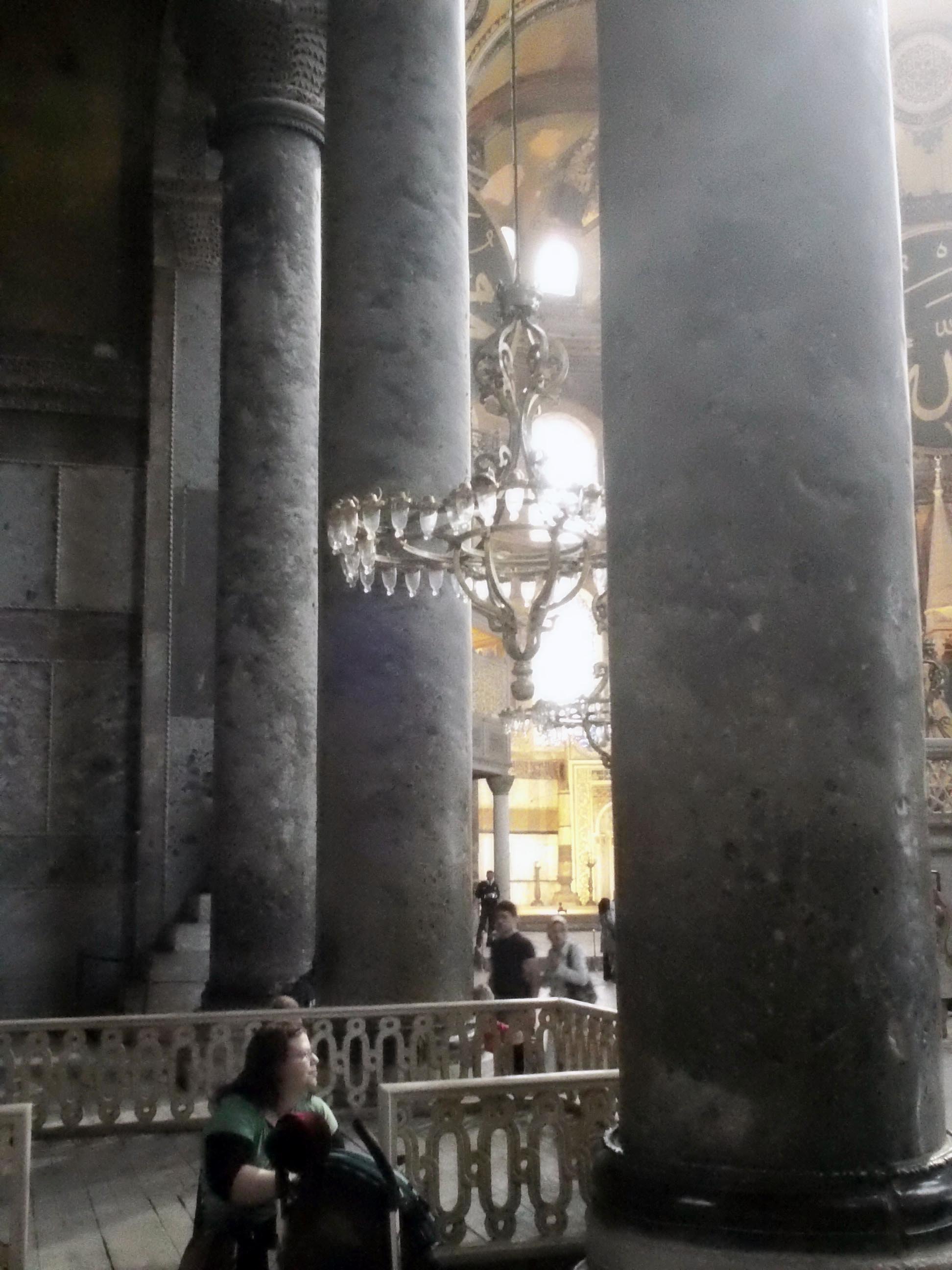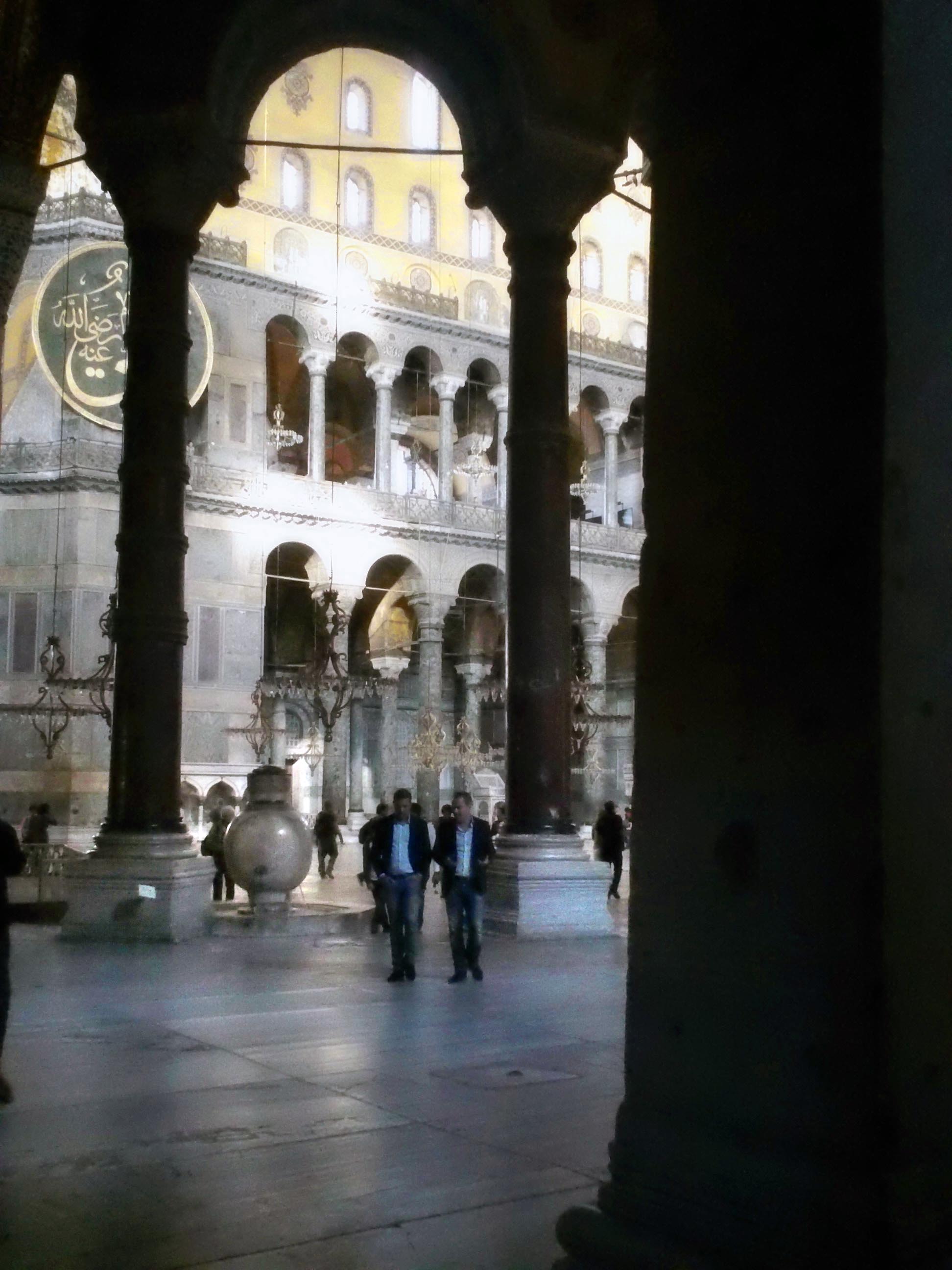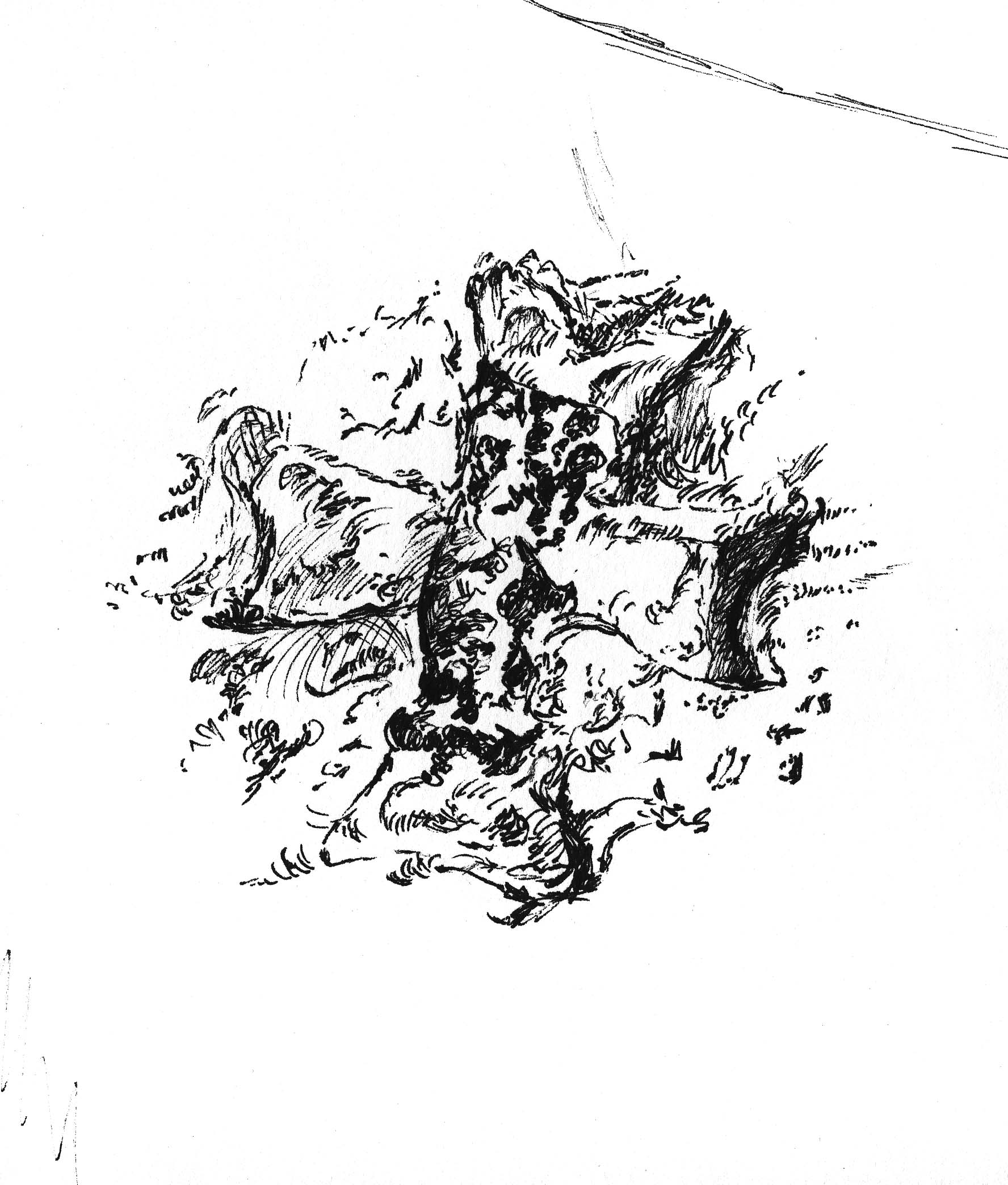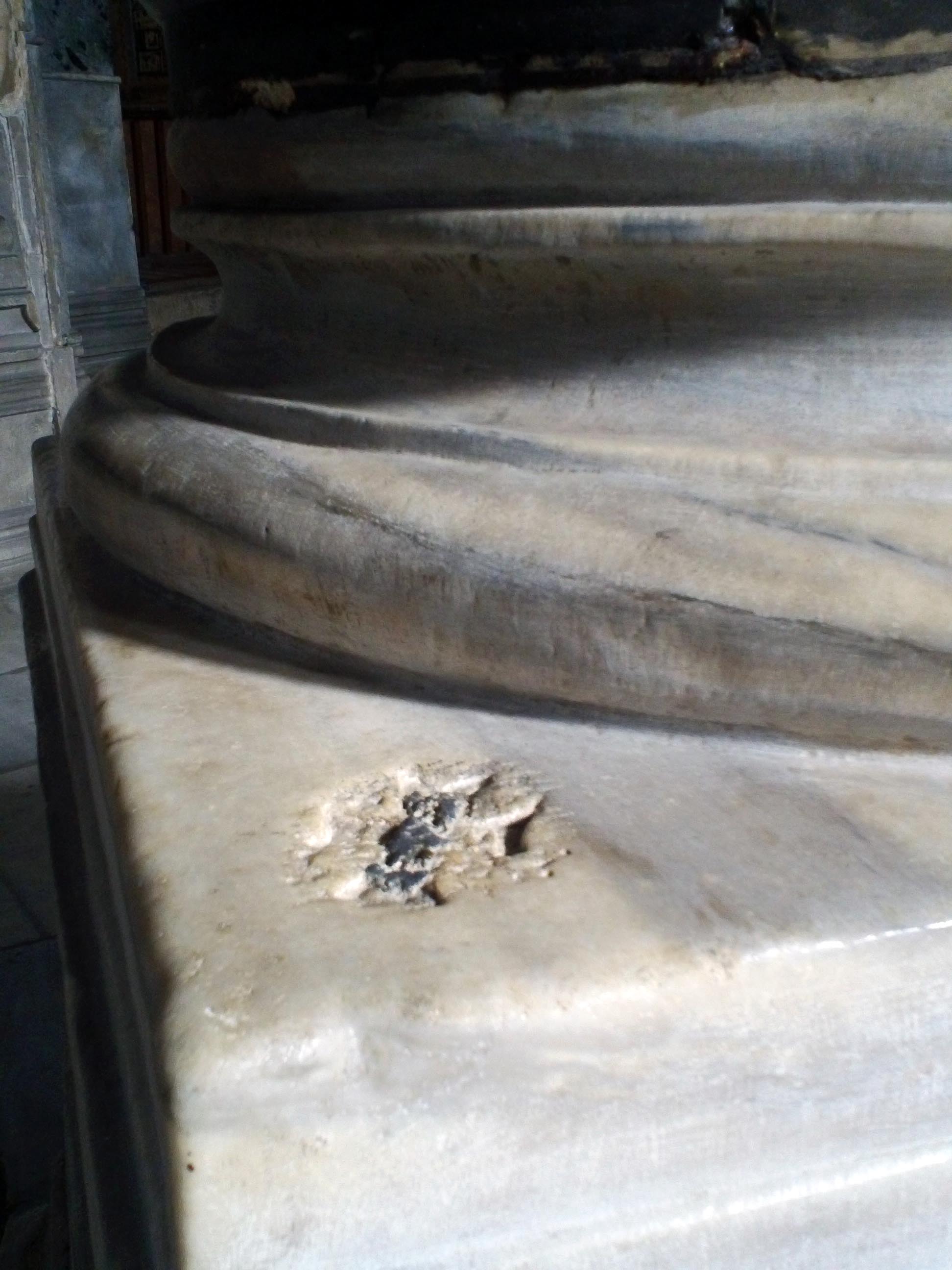Pagan Columns
Sources differ as to the origin of these eight giant green columns, each 70 tons of priceless malachite, probably 2400 years old. Tradition claims Justinian brought them from Ephesus, from the Temple of Artemis or the Gymnasium there. Other sources claim that they’re from the Temple of Baalbek in Lebanon. I haven’t been there, but photos show zero malachite. The big purple ones, porphyry, are probably from Rome. Porphyry must be harder to carve, because I’ve yet to find a cross cut in it. Almost all of the columns here– veined purple-and-white, speckled green, swirled purplish-grey, golden, and the green and purple monoliths– were scavenged from Pagan temples; brought by barge, rolled on logs, hauled by lines of straining oxen, sweating slaves, cushioned in bushels of straw, great wooden wheels groaning over the Roman roadstones.


Clearly, Hagia Sophia’s architects, Isadore of Miletus and Anthemis of Tralles, got the most magnificent columns to be had in matched sets, and the leftovers from this perfect symmetry likely made up the nearby Cistern, also built by Justinian at the same time as Hagia Sophia. The Cistern, never meant to be seen, creates an effect so breathtaking that it takes a few visits to realize that all of its columns are flawed.
Here in the great temple, the columns are all different sizes, and it’s wonderful how the architects worked with these limitations. I’ve always loved Hagia Sophia’s feline, feminine curves. Now I see a practical application: the arches swoop down to meet the shorter columns, up to reach the tall ones. Some columns are mounted on pedestals. Here’s a cross carved in the corner of one.


I love reading these.
Reblogged this on Drawing On Istanbul.
I love Istanbul and these drawings bring to me the need to go back and see the city with Trici’s eyes.
Fantastic!